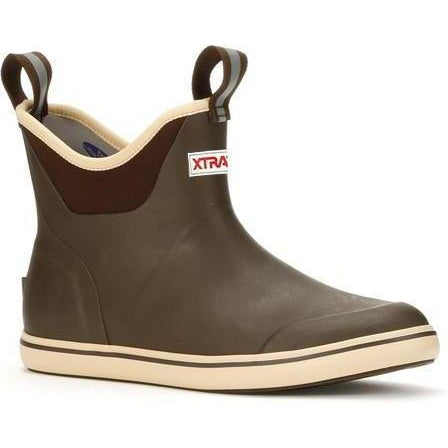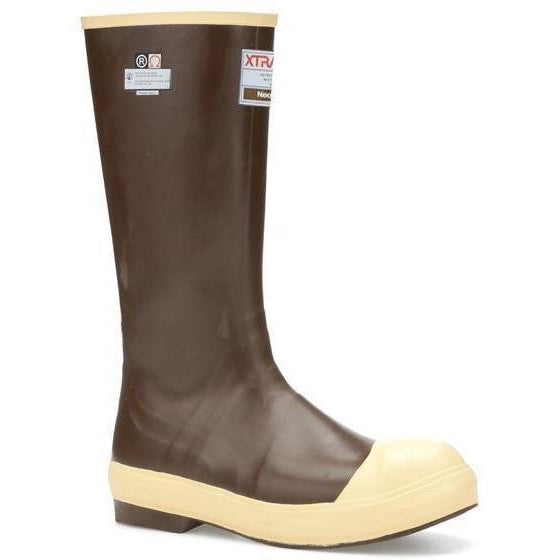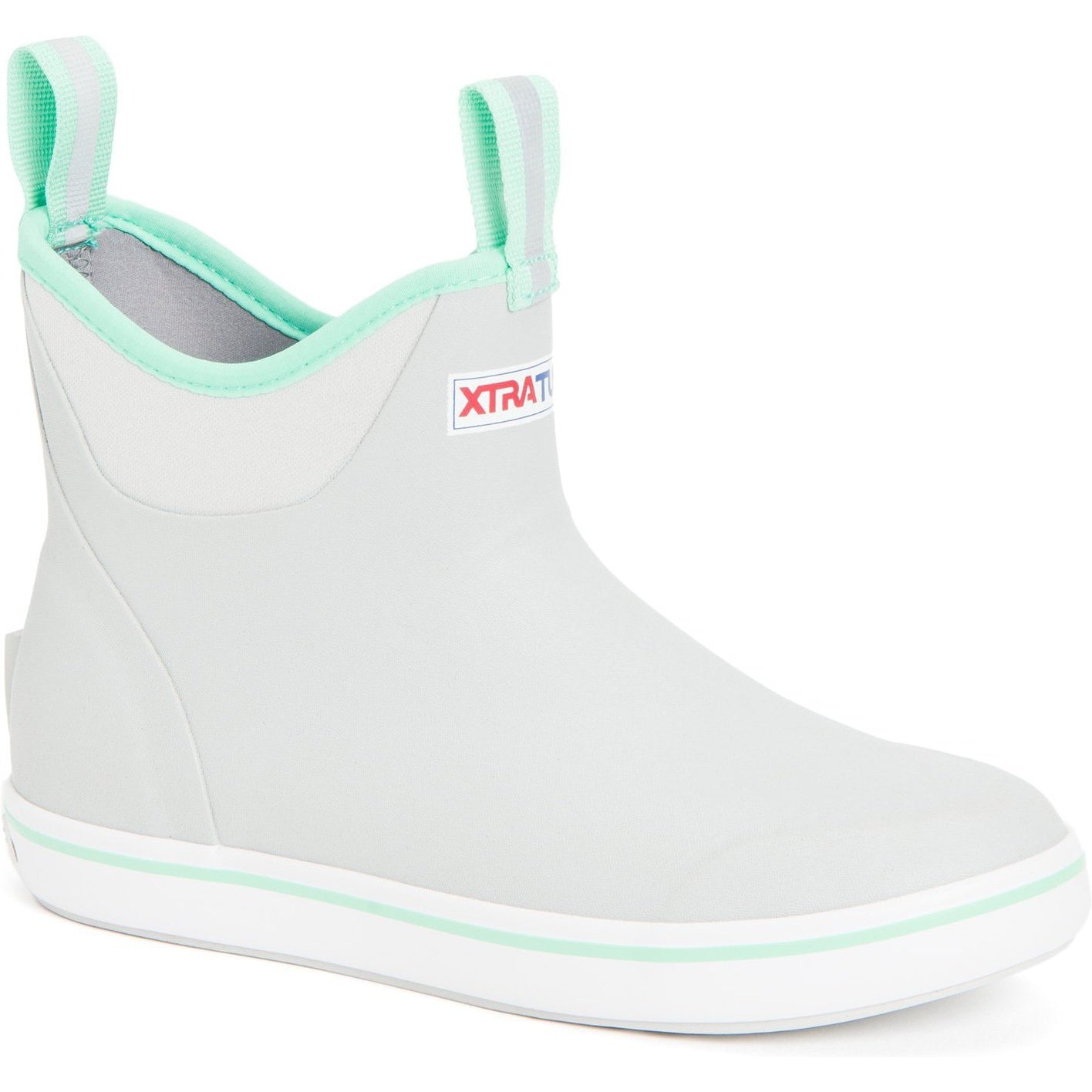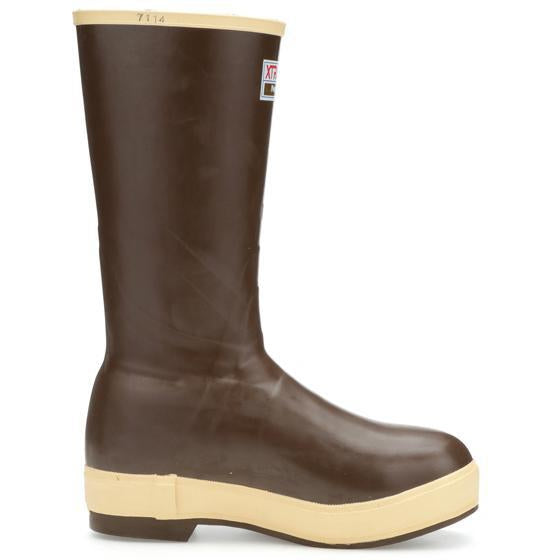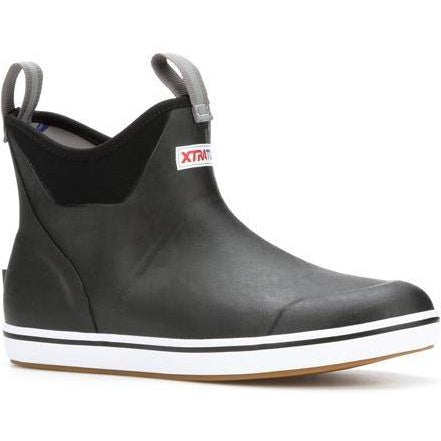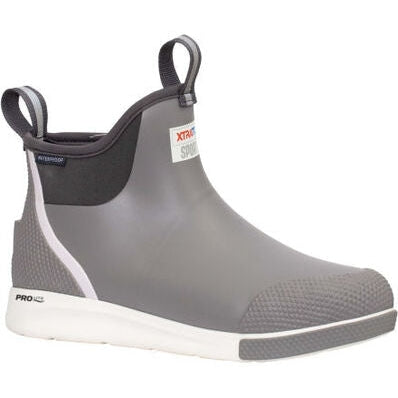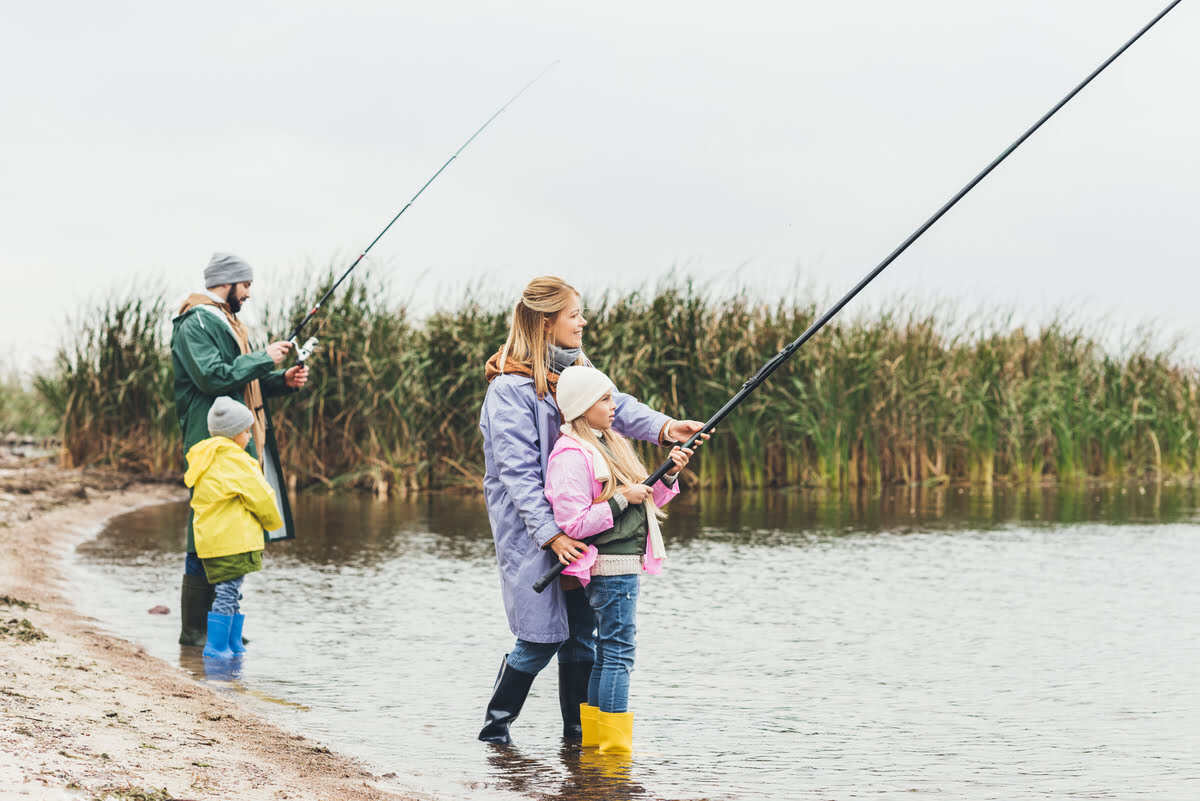Anglers, if you've ever stood knee-deep in a gurgling stream, reeled in a big one from a rocking boat, or simply tried to keep your feet dry in those treacherous wet conditions, then you know the critical role a reliable pair of fishing boots plays in your arsenal. But it's not just about comfort and safety (although those are crucial, too).
In this article, we’ll explore the most important fishing boot features that'll keep your feet dry, comfortable, and firmly planted on slippery surfaces, leaving you with one less thing to worry about so you can concentrate on what really matters – reeling in the big catch! After all, no matter the season or your fishing prowess, you want your head in the game.
So, let's uncover the key features of fishing boots to look for when it comes to these trusty companions and gear up for baiting excellence.
How to Choose the Right Pair of Boots for Fishing?
Although people tend to connect high-cut rubber boots with fishing, in this day and age, fishing footwear is much more versatile. So, the real question is, what do fisherman wear on their feet? Manufacturers are responding to the diverse needs of commercial and recreational fishermen and offer a wide range of choices – meaning there are a lot of features to keep track of.
Albeit a good thing, this presents many anglers with a tough call —how to pick the right pair of fishing boots that fits their specific needs. Knowing what features to look for in a pair of boots for fishing will help you make better buying decisions.
Some cast their lines from a boat's wet surfaces; others prefer the sturdy ground beneath their feet on the shore. Some brave souls battle relentless rain and cold conditions, while others are left sweltering in the scorching sun. Do you thread shallow water or battle deep water? Your type of fishing style makes all the difference out there and will dictate the boot style you need.
So, let's dive in and explore the key fishing boot features that'll guarantee you the best angling experience and a perfect day of fishing, no matter what Mother Nature throws your way!

Buyer’s Guide: 7 Key Features of Fishing Boots to Look for
[prc-collections-carousel]
We compiled a list of the seven most important features of fishing boots in general. However, there is no one option for anglers to rule them all.
Different types of fishing boots offer different advantages and levels of protection, so you must consider the features that meet your personal preferences and requirements and pick the type of boot accordingly.
1. Waterproofness / Water Resistance
While wading around the shore, looking for the best fishing spot, you want to step into the water without fear of getting your feet wet, so high-cut rubber boots should be your first choice. Choose high-quality waterproof boots, such as vulcanized rubber boots with waterproof liners. It's a plus if they're coated with a water-repellency treatment for extra protection.
You might not need high-cut boots if you like to angle from a boat. What you do need is a pair of boots that will not collect water or rain as it falls on top of you. Make sure you find low-cut rubber boots that fit well with your protective pants and are water-resistant to come back home dry as a bone, even in the pouring rain. Water repellency will also help while stomping through the snow. However, in that case, a regular waterproof design might not be enough, but more on that later.
Neoprene upper, that flexible and snug-fitting material, offers you a solid choice for a waterproof upper that moves with you as you reel in your catch. On the other hand, rubber uppers are the tried-and-true champions, providing additional protection and sturdy and dependable waterproof coverage.
2. Comfort and Weight
When it comes to the matter of comfort, you want to avoid cheap rubber material and deformable boots. The best pair of fishing boots is, above all, a comfortable pair. You don't want your feet to hurt in uncomfortable boots while trying to focus on angling; you want to keep your feet comfortable in quality boots. So, look for fishing boots with cushioned insoles and foam midsole for a stepping-on-a-cloud feel.
Or, go for ones with a removable insole you can swap out with another one for extra comfort. Your boots should not be heavy and harsh on your lower back; find a lightweight pair to walk easily on any surface. Lightweight boots made from lightweight materials such as breathable mesh and synthetic fabrics offer maximum comfort.
But don't forget to factor in their water resistance capabilities – they're not the best choice for anglers threading deep water or chilly conditions. Additionally, you need footwear with proper arch support for all-day comfort, especially if you plan to walk long distances.
3. Safety and Slip-Resistance
Now, let's talk about safety on slippery surfaces. Your fishing boots should be your trusty sidekick in keeping you upright and in control. We're talking non-slip soles here – the absolute game-changer when navigating treacherous terrain. It's not just about preserving your good mood; it's about safeguarding yourself from potential mishaps.
Go for rubber soles designed for slippery conditions that provide superior traction on slick surfaces. Whether you're tip-toeing on slippery rocks or navigating the deck of your boat with a boat-specific sole, you want that exceptional traction that keeps you firmly planted where you belong – on dry surfaces. So, what makes non-slip soles the safe choice? It's all about the grip pattern of the rubber soles.
You'll find leveled toe springs and heels, flat arches, and optimized sole tread patterns for expert liquid channeling and additional traction, such as felt soles. Why do fishing boots have felt soles? Felt soles excel in providing outstanding grip because of their superior friction. When navigating streams with slick, moss-covered rocks, they are the top choice for ensuring a secure footing.
While some might sport protective safety toes, most of the time, you won't need that kind of armor in your fishing gear. The key is to choose a boot that suits your fishing terrain, ensuring you have superior traction whatever comes your way.

4. Insulation
Angling in cold or icy conditions can be challenging enough without your feet freezing. Fishing boots for wet surfaces and snowy terrains must have insulation pads and cushioning for adequate frostbite protection. Boots with insulation are a non-negotiable choice for anglers fishing in areas with heavy snow and low temperatures – regular rubber boots just won't cut it.
Insulated waterproof work boots will prevent the heat from your body from leaving and keep your feet warm. Don't forget to put on a pair of thermal socks for excellent insulation. Consider buying your boots half a size above what you usually wear since pairing thick thermal socks with fishing shoes can leave little to no room for your toes, as they tend to be pretty thick.
5. Easy Cleaning & Care
Other key aspects of fishing boots that'll keep your feet warm and comfortable out there – quick drying and easy cleaning. Picture this: You've just had an epic day on the water, maybe in humid conditions that left you sweating bullets. The last thing you want is to wait around for days on end, twiddling your thumbs while your boots dry out or risk getting your feet wet; you want to dry your boots fast.
And, let's face it: after a day of reeling in the big ones, you don't want to spend hours scrubbing your boots. You want to hit the sack and wake up to dry, fresh kicks ready for action. It's not too much to ask, and it's easily found in many flat rubber boots.
So, when you're hunting for the perfect pair of fishing boots, remember to check off these crucial boot features to ensure you spend less time fussing over your gear and more time doing what you love – fishing! A pro tip? If you're really pressed for time, you can always use a boot dryer.
6. Breathability
Now, let's talk about keeping those feet cool while you conquer the waters. Fishing footwear isn't limited to just high-cut rubber boots anymore. In those scorching hot fishing spots or if you're an agile angler always on the go, a breathable boot is your best buddy. You've got options like lower-cut boots and even sneakers that bring extra airflow to the party.
Some anglers swear by their trusty clogs, while others opt for athletic leisure shoes for that crucial arch support and feather-light feel. Sweaty, wet feet can lead to some unwelcome consequences, funky, unpleasant odors being one of them. But beyond that, it's also about keeping your feet healthy in breathable shoes that offer antimicrobial protection.
7. Height
The height of your fishing boots matters more than you might think. The type of fishing boots you choose can make or break your angling experience. For those casual deck boots to battle wet surfaces, ankle-high is often the way to go. What are the benefits of ankle boots? Ankle fishing boots offer you agility and ease of movement, perfect for those quick maneuvers in shallow water and casting your line with precision. Plus, they're a breeze to slip on and off.
But if you're heading into deeper waters or tackling mucky conditions, consider knee-high boots. Knee-high fishing boots are a popular choice among anglers for a reason. For example, with 12-inch deck boots (which are a hit with commercial fishermen), you've got some serious waterproof protection and extra coverage, ensuring your feet stay dry and comfortable.
And for the truly adventurous, there are hip boots. These give you ultimate protection and water resistance, allowing you to confidently wade into deep waters. So, when it comes to the height of your fishing boots, it's all about picking the right boot model to match your conditions and type of fishing.

Do Xtratuf Boots Qualify as the Best Fishing Boots?
[prc-collections-carousel]
Inspired by the fisherman in Alaska, the creators of Xtratuf boots did think about everything. The high-quality rubber, easy-on handle, arch support, water-repellent coat, and slip-resistant soles – all those most important features of fishing boots and more in one Xtratuf boot. Plus, the recognizable design will distinguish you from an amateur angler.
Even if you do it as a hobby, you will appear professional. From breathable ankle boots to high-cut chemical and water-resistant boots, Xtratuf answers all anglers' prayers. But don’t shy away from eyeing other brands too – the competition for the best fishing boots on the market is pretty tight.
Find Your Pair of the Best Fishing Boots at Overlook Boots
Ready to gear up? Head over to our wide selection of American-made, high-quality commerical fishing boots at affordable prices – we've got a treasure trove of options from the leading brands of boots so that you can take your pick from an array of designs and features and match your needs.
Just follow the wisdom you've gained from this article, and you'll be well on your way to snagging the perfect pair of boots for your next angling escapade.
Don't miss out – your ideal fishing boots are just a click away!
Fishing Boots FAQ
We've answered some of your burning questions about angler's footwear below.
What Are Fishing Boots Used for?
Fishing boots primarily provide protection and comfort for anglers while fishing. They help keep the feet dry, provide traction on slippery surfaces, and offer support during long hours of fishing.
What Are the Best Fishing Boots for Winter?
The best fishing boots for winter are typically insulated and waterproof to keep your feet warm and dry in cold and wet conditions. Look for options with Thinsulate insulation or neoprene lining for added warmth.
What Are White Fishing Boots Called?
White fishing boots are often called "deck boots" or "shrimp boots." These rubber boots are designed for use on boats and decks, offering slip-resistant features and protection against water and fish guts. Shrimpers typically don these boots when they're out on their boats, earning them the latter nickname.
What Are Rubber Fishing Boots Called?
Rubber fishing boots are commonly referred to as "rubber boots," "wader boots," or simply "waders."
Do You Wear Socks with Fishing Boots?
Yes, it's recommended to wear socks with fishing boots. Socks provide additional comfort and moisture-wicking properties and help prevent blisters. Choose moisture-wicking or thermal socks, depending on your weather conditions.
